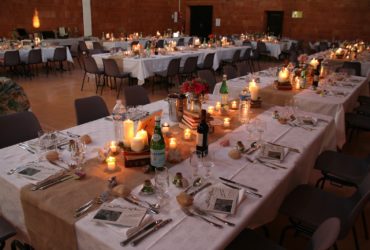Long before neuroscience mapped the brain’s role in awareness, ancient Egyptian wisdom wove together geometry, healing, and spiritual clarity—principles embodied in the Eye of Horus. This sacred symbol transcends myth, offering a profound blueprint for restoring inner vision through balance and presence, principles central to modern mindfulness.
The Eye of Horus: A Symbol of Ancient Balance and Holistic Awareness
Rooted in Egyptian cosmology, the Eye of Horus represents more than divine protection—it is a profound emblem of wholeness, healing, and restoration. Horus, the god of sky and kingship, lost his eye in a cosmic battle, only to be restored by Thoth, the god of wisdom. This myth underscores the Eye’s role as a metaphor for regaining clarity, both physical and psychological. “The Eye symbolizes the mind’s capacity to perceive truth after fragmentation,” reflects Dr. Farouk El-Baz, Egyptologist and spiritual scholar. “Just as the eye was mended, so too can inner vision be restored through mindful intention.”
Geometric Harmony in Sacred Architecture
Beyond symbolism, the Eye of Horus echoes the precision of ancient Egyptian geometry. The alignment of pyramid faces, particularly the Great Pyramid of Giza, demonstrates an extraordinary orientation within 4 minutes of true north—a feat requiring advanced astronomical and spatial knowledge. This sacred geometry reflects a civilization deeply attuned to cosmic order, where every measurement served not only structural purpose but spiritual alignment. The Eye’s form, often rendered with precise proportions, mirrors the mathematical harmony believed to govern the universe, reinforcing the idea that balance begins with harmony in shape and space.
The Metaphor of Restored Vision in Modern Mindfulness
Modern mindfulness seeks to restore inner clarity—much like the Eye’s restored sight symbolizes the reawakening of awareness. Just as the Eye heals fragmented vision, mindfulness practices cultivate emotional regulation, mental focus, and clarity of thought. “The Eye invites us to see beyond the surface,” notes mindfulness teacher Amira Khalil, “transforming symbolic protection into psychological grounding.” This dual function—divine emblem and mindful anchor—bridges ancient ritual with present-day psychological well-being, offering a visual and conceptual touchstone for grounding practice.
From Ritual to Resilience: Embodied Presence
Ancient Egyptian ceremonies honoring Horus were not mere rituals—they were embodied mindfulness exercises. Offerings, chants, and directed attention cultivated presence and inner equilibrium. Today, such practices resonate in breathwork, body scans, and intentional focus, where centering mirrors the pyramid’s precise orientation. “Mental alignment—centering the mind like a pyramid surveying true north—anchors us in right presence,” says Dr. Khalil. The Eye’s form thus becomes a meditative tool, guiding the practitioner to stabilize awareness amid inner turbulence.
Mathematical Precision and Sacred Geometry in Ancient Egypt
The Rhind Mathematical Papyrus reveals early Egyptian geometry grounded in sacred measurements, reflecting a worldview where mathematics served sacred purpose. Scribes calculated areas and angles not only for construction but spiritual alignment, embedding cosmological order into earthly design. Pyramidal structures, oriented within minutes of true north using shadow and star observations, reveal a civilization that fused empirical skill with metaphysical insight. “The accuracy of these alignments underscores a holistic understanding: geometry as both science and spiritual language,” explains Dr. El-Baz.
Symbolic Geometry as a Mirror of Balance
The Eye of Horus itself is a geometric masterpiece—its proportions embodying the golden ratio and harmonic divisions, principles central to sacred geometry. Each segment of the Eye’s form reflects proportional harmony, symbolizing the integration of mind, body, and spirit. This visual embodiment of balance invites contemplation: “When we gaze upon the Eye,” says scholar and meditation guide Leila Nassif, “we see not just an icon, but a map of inner equilibrium—where every part supports the whole.”
Practical Lessons from Ancient Wisdom for Contemporary Practice
Ancient rituals were ritualized presence—embodied acts of attention. Today, mindfulness can adopt this embodied approach through deliberate symbolic tools. The Eye of Horus, as a modern anchor, offers a structured focal point: its concentric rings guide gaze and breath, symbolizing wholeness and layered awareness. “Using the Eye’s form in meditation is like standing at the pyramid’s base and surveying the field—turning inward to restore inner alignment,” notes Nassif.
- Use Eye Of Horus visualization to focus attention during mindfulness sessions.
- Anchor mental centering by imagining the Eye’s proportional balance.
- Integrate ethical intention, reflecting the Eye’s link to justice and protection.
Enduring Relevance: Timeless Symbols in Modern Well-Being
The Eye of Horus endures not as a relic but as a living symbol—connecting myth to meditation, geometry to psychology, and protection to personal responsibility. Its presence in modern mindfulness tools like eye of horus free spins no deposit illustrates how ancient wisdom continues to guide inner stillness. “This symbol reminds us that healing starts with seeing ourselves clearly—spiritually, emotionally, and mentally,” concludes Dr. El-Baz.
Table: Key Dimensions and Symbolic Proportions of the Eye of Horus
| Aspect | Value/Feature | Significance |
|---|---|---|
| Pyramid True North Accuracy | 4 minutes of arc | Advanced observational precision |
| Eye Segment Proportions | Proportional to golden ratio | Symbol of harmonic balance |
| Geometric Harmony | Golden ratio divisions | Embodies sacred geometry |
| Symbolic Wholeness | Restored vision across physical and spiritual | Metaphor for inner clarity |
This enduring symbol reminds us that true mindfulness is not just practice—it is perception. When we honor the Eye of Horus, we engage a timeless blueprint for seeing ourselves—and life—with greater clarity, balance, and purpose.


